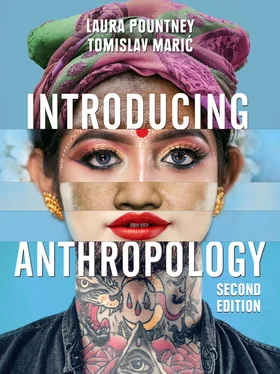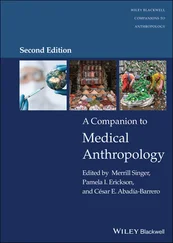1 How different are anthropologists’ lives at home in their own institutional and cultural contexts from their lives abroad while conducting the research that they subsequently share in their memoirs and ethnographies?
2 What part of the anthropologist’s identity revealed in ethnographies is shaped by their own culture and how can it provide a window to an understanding of the general work that anthropologists do?
3 How do students of anthropology navigate the challenges of ethnography while undergoing training in their own institutions before going ‘out’ into the ‘field’ to undertake their major ethnographic projects, and how might these projects inform each other?
4 Are mini-ethnographies, conducted at home to fulfil research methods course requirements, some kind of symbolic representation of dissertation fieldwork carried out in any field far away from the departments and institutions?
5 How do anthropologists interact at annual professional meetings and what does it say about anthropology as a discipline within the larger field of academic practice? Is the annual meeting a ritual similar to the cultural rituals analysed by anthropologists such as Clifford Geertz or Victor Turner? [See Chapter 9.] And to what extent do those rituals in professional meetings represent windows into understanding American anthropological culture?
My work does not present the undiluted culture of America and of anthropologists, but rather my understanding and interpretation of the ways and thoughts of individuals with whom I have interacted and of events that I have attended. This is not unlike many similar practices engaged in by anthropologists throughout their ethnographic research. My work is an account of how Americans and anthropologists with whom I have interacted have constructed what I consider to be a relatively consistent and shared set of actions, thoughts and beliefs that constitute a cultural logic that made sense to me. But, as anthropologists, we encounter other cultures against a backdrop of our own cultures and this in itself cannot be ignored in understanding the questions we ask, the conclusions we come up with or the topics and issues we seek to pursue. That is why I conclude that my book is as much about American anthropology as it is about my own cultural background; it is a conversation between two cultures and an analysis of key elements in the composition of that conversation within an anthropological frame.
Interview with Brian Morris (2015)
DESCRIBE YOUR ETHNOGRAPHIC RESEARCH.
I have carried out four major pieces of fieldwork. The first was for my PhD, studying the Hill Pandaram people, who are hunters and gatherers in South India. I also carried out my research in Malawi on the relationship people have with their environment. I later returned to Malawi to study people’s relationship with animals, small mammals.
HOW DID YOU GAIN ACCESS TO THE GROUP YOU STUDIED?
I never actually had a problem gaining access in Malawi, as I lived and worked there for seven years on a tea plantation before I began my fieldwork. Very few people spoke English there at that time, so I had to learn the local language, Chichewa. So, when I began my research, I already knew the context and language well.
WHAT RESEARCH METHOD(S) HAVE YOU USED IN YOUR FIELDWORK? The main research method I use is to participate and join in activities and to observe. The best way to join in is by chatting with people. If you ask me what my research method is, it is chatting! In Malawi the word they use for chatting is ‘kucheza’. It is very important in Malawi culture. To chat or discuss means to be sociable, so it is seen as important to chat to people. I would also go with local Malawi people to do what they were doing, and I constantly asked questions. When I studied mammals in Malawi I joined in rituals, which allowed me to be part of the group. I would often just listen to people’s conversations. I learnt a lot about Malawi culture this way.
WHAT WAS THE MOST DIFFICULT PART OF YOUR FIELDWORK?
The main difficulty I faced in my research in India was living in the forest. I decided to walk barefoot in the same way as the Hill Pandaram people, which was not easy. Sleeping was another problem. I am only an average height, but the Hill Pandaram are small, on average around 5 foot tall. They don’t have houses; instead, they make small conical shelters with palm leaves to cover themselves and to protect them from the rain. I found it very difficult sleeping in these because it rains most of the time and there is always a dog trying to hog the warmth of the fire (dogs are very important to them for hunting), and it was really a problem. I would have to sleep either in the foetal position or put my legs straight, with my legs outside the sleeping bed. I got wet with the rain and I did not have any blankets. The Hill Pandaram people are nomadic and move continually between camps, approximately every ten days, so I became nomadic too. I would spend three days with the Hill Pandaram in the jungle and then return to the village, where I lived with my family. I was there with my wife and three young daughters. It was very difficult for my family, but having children actually was not a handicap for my research at all. It opened to us many things, as Indians love children. So we were accepted very quickly in the village.
HOW DID YOU LEARN WHAT TO LOOK FOR?
I go around like a hunter-gatherer but I gather knowledge, and I gather anything that relates to my topic of research. So I would go and chat with people, stay at cheap rest houses, sitting there and drinking beer, and then I would turn the conversation towards insects, for example, to see how people might relate to them. I would cut out all of the local newspapers reports on insects. I would look at archives for locust swarms and dig up information on everything. I would then gather this data and put it into my field book.
HOW DID YOU RECORD YOUR DATA?
The only thing I would have is my notebook. So everything I did, learnt, would go into my journal. I call my notebooks ‘journals’. Fifteen to twenty journals would be the basis of my book. I have a camera and a pair of binoculars, which is all of my equipment.
WHO WERE YOUR MAIN INFORMANTS?
All my informants are people that I get along with. For example, there were some people in Malawi who knew what I was after straight away and there were some others who were not very informative at all. You naturally gravitate towards people that you get on with and with the people that will help you with your research. I got close to certain individuals that I worked and shared food with.
WHAT WAS THE IMPACT ON YOUR RESEARCH PROCESS AND FINDINGS OF INDIVIDUAL DIFFERENCES (AGE, GENDER, ETHNICITY, CLASS, NATIONALITY) BETWEEN YOU AND YOUR INFORMANTS?
There are certain behaviours in Malawi that you have to observe. You have to conform to local customs. Malawians have always related to Europeans throughout history in one way or another. When you are an anthropologist you are always ambiguous. You are part of the culture but you are always an outsider.
WHAT WERE THE PRACTICAL ISSUES THAT YOU ENCOUNTERED BEFORE, DURING AND AFTER YOUR FIELDWORK?
In Malawi I always had a motorbike, as you can get everywhere, especially during the rainy seasons. There are lots of dirt roads and they get very muddy, so buses and lorries get stuck and nothing can get past. However, on a motorbike you can go anywhere. Unfortunately, I always had accidents on my motorbike and suffered a lot in my research – falling off the motorbike!
WHAT WERE THE ETHICAL ISSUES THAT YOU EXPERIENCED IN YOUR FIELDWORK? Ethics are a part of everyday life for everyone. Doing fieldwork is no different than my going around here and talking to people here in my town in England. There are certain things that I should do as a human being and those that I should not. Anthropology is always ethical. I don’t see the difference between how I treat people here and how I treat people in Malawi. You can’t just barge into people’s houses and ask questions; you have to have tact. All my informants became my friends. It starts off with being an informant but then it turns into friendship, so there is no distinction between informant and friend. I always tell my informants that I am there because I am interested in understanding their way of life.
Читать дальше












